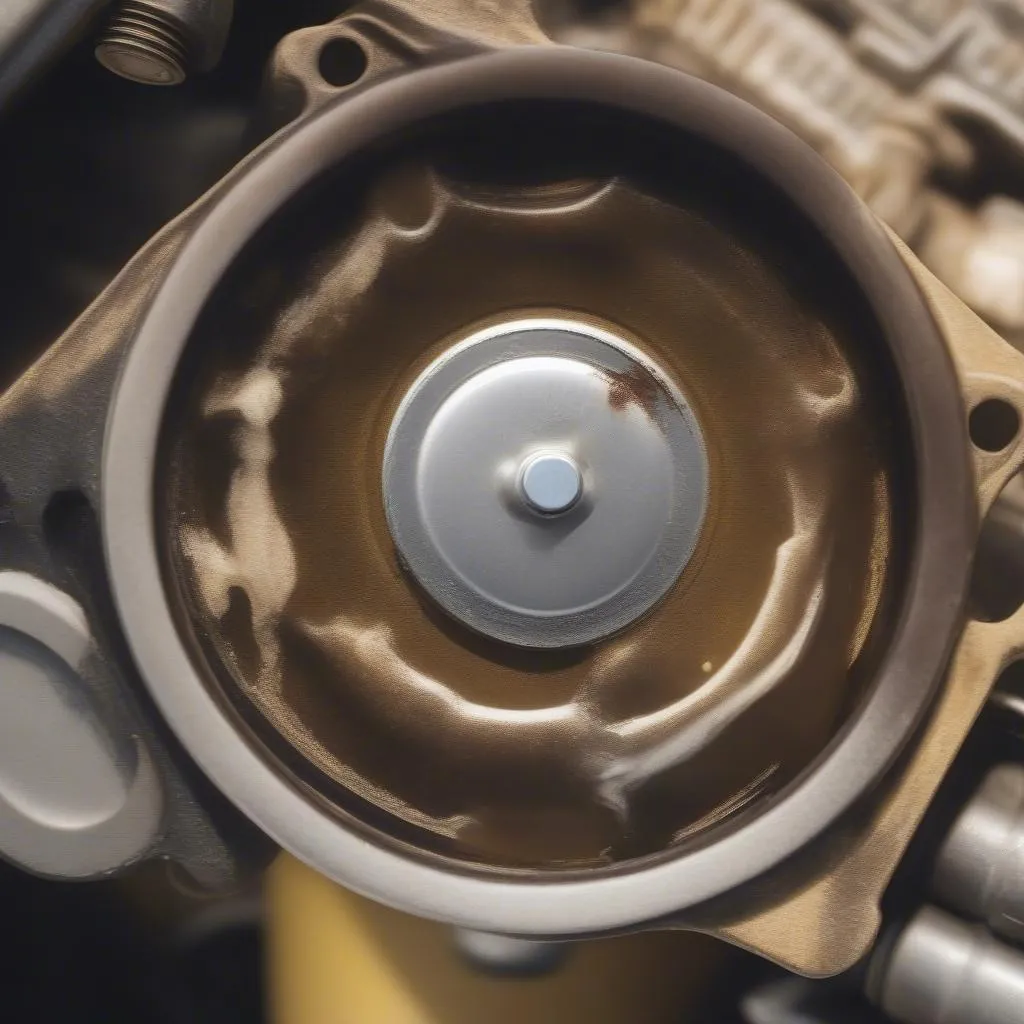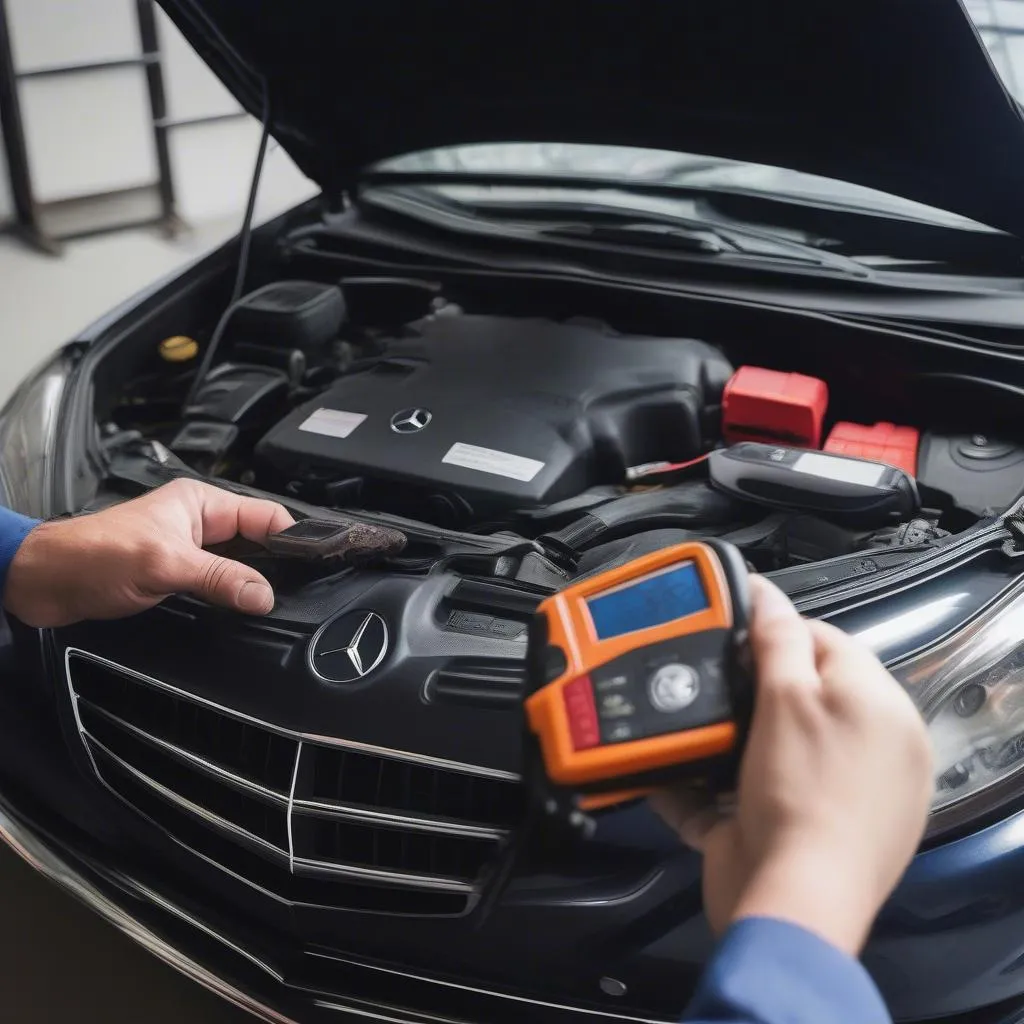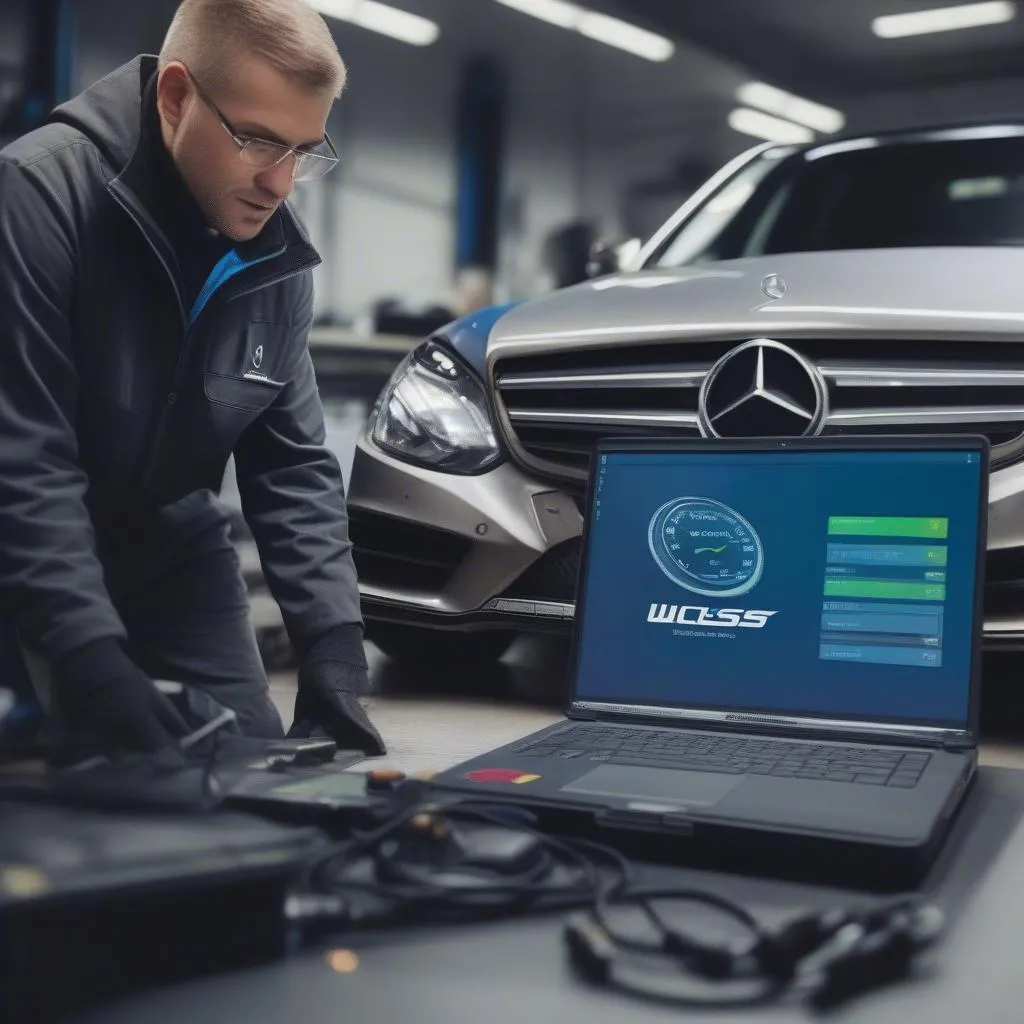Discovering engine oil in your Mercedes E350’s coolant is a serious issue that should never be ignored. This problem signifies a breach between the oil and coolant passages, and if left unattended, can lead to catastrophic engine damage. This comprehensive guide will walk you through the common causes, symptoms, and repair options for this issue.
Understanding the Problem: Why is Oil Mixing with Coolant?
Your Mercedes E350 engine is designed to keep the oil and coolant separate to ensure proper lubrication and cooling. When these two fluids mix, it indicates a failure in one or more components, allowing them to intermingle. Here are the most common culprits:
-
Head Gasket Failure: The head gasket acts as a seal between the engine block and cylinder head. A blown head gasket, often caused by overheating, is a common culprit for oil and coolant mixing.
-
Cracked Cylinder Head or Engine Block: Similar to a head gasket failure, cracks in either the cylinder head or engine block can create a passage for oil and coolant to mix. These cracks are often due to extreme temperature changes or internal engine problems.
-
Oil Cooler Failure: Some Mercedes E350 models have an oil cooler that uses coolant to regulate oil temperature. A leak in the oil cooler itself or a failed gasket can result in fluid mixing.
Identifying the Symptoms: Is My Oil Mixing with Coolant?
Early detection is crucial to prevent further engine damage. Be vigilant for these signs:
-
Milky or Discolored Coolant: Coolant should typically be a bright green, orange, or yellow. If it appears milky, frothy, or has an oily sheen, it’s a strong indication of oil contamination.
-
Overheating: When oil mixes with coolant, it disrupts the engine’s cooling system, often leading to overheating.
-
White Exhaust Smoke: Excessive white smoke from your exhaust, especially with a sweet smell, suggests coolant is burning in the combustion chamber, often due to a head gasket failure.
-
Low Coolant Level: If you’re frequently topping off your coolant, yet there are no visible leaks, it could indicate an internal leak where coolant is mixing with the engine oil.
-
Engine Misfires or Rough Running: The presence of coolant in the combustion chamber disrupts the combustion process, potentially causing misfires and a rough-running engine.
Gathering Your Tools: What You’ll Need
Before starting any repair, it’s essential to have the right tools and equipment. Here’s a list of what you might need:
- Socket set and wrenches: To remove and install engine components.
- Torque wrench: For proper tightening of bolts.
- Coolant drain pan: To collect the old coolant.
- Funnel: For refilling the coolant.
- Shop rags: For cleaning up spills.
- Replacement parts: Depending on the diagnosis, you may need a new head gasket, oil cooler, or other components.
Fixing the Issue: A Step-by-Step Guide
Important: Diagnosing and repairing engine problems often requires specialized knowledge and tools. If you’re not comfortable working on your car, it’s best to take it to a qualified mechanic, especially for serious issues like oil mixing with coolant.
Here’s a general overview of the repair process, but keep in mind that the specific steps will vary depending on the root cause:
-
Diagnose the Problem: The first step is to accurately identify the source of the leak. This may involve a pressure test of the cooling system, inspection of the oil cooler, or a compression test to check for a blown head gasket.
-
Access the Faulty Component: This might involve removing the intake manifold, valve covers, or other engine components to reach the problematic area.
-
Replace the Faulty Component: Once you’ve accessed the issue, replace the damaged part, whether it’s the head gasket, oil cooler, or another component. Ensure you use new gaskets and seals during reassembly.
-
Reassemble and Refill: Carefully put everything back together, following the proper torque specifications for all bolts. Refill the cooling system with the correct type and concentration of coolant.
-
Test the Repair: Run the engine and monitor the coolant level and any signs of leaks. If the problem persists, further diagnosis and repair may be necessary.
 Mercedes engine oil and coolant mixing
Mercedes engine oil and coolant mixing
Frequently Asked Questions
Q1: Can I still drive my Mercedes E350 if oil is mixing with coolant?
A: It’s strongly advised not to drive your car if you suspect this issue. Continuing to drive with a blown head gasket or other serious engine problem will worsen the damage and potentially lead to engine failure.
Q2: How much does it cost to fix oil mixing with coolant in a Mercedes E350?
A: Repair costs vary significantly depending on the cause and the extent of the damage. A head gasket replacement, for example, can be a labor-intensive repair, while an oil cooler replacement might be less expensive. Consult with a qualified mechanic for an accurate estimate.
Q3: Can a faulty radiator cap cause oil to mix with coolant?
A: While a bad radiator cap can lead to coolant leaks and overheating, it won’t directly cause oil and coolant to mix. The issue usually lies within the engine itself, where the oil and coolant passages are compromised.
Q4: Can a diagnostic tool help pinpoint the problem?
A: Yes, a professional-grade diagnostic tool like those offered by CARDIAGTECH can be extremely helpful in diagnosing engine problems. These tools can read engine codes, monitor coolant temperature and pressure, and provide valuable data to pinpoint the source of the leak.
 Mechanic using a car diagnostic tool
Mechanic using a car diagnostic tool
In Conclusion
Addressing oil mixing with coolant in your Mercedes E350 promptly is crucial to avoid costly engine repairs. By understanding the causes, recognizing the symptoms, and taking the appropriate steps, you can get your Mercedes back on the road and ensure its longevity. If you’re not comfortable tackling this complex repair yourself, don’t hesitate to seek help from a qualified Mercedes mechanic.


